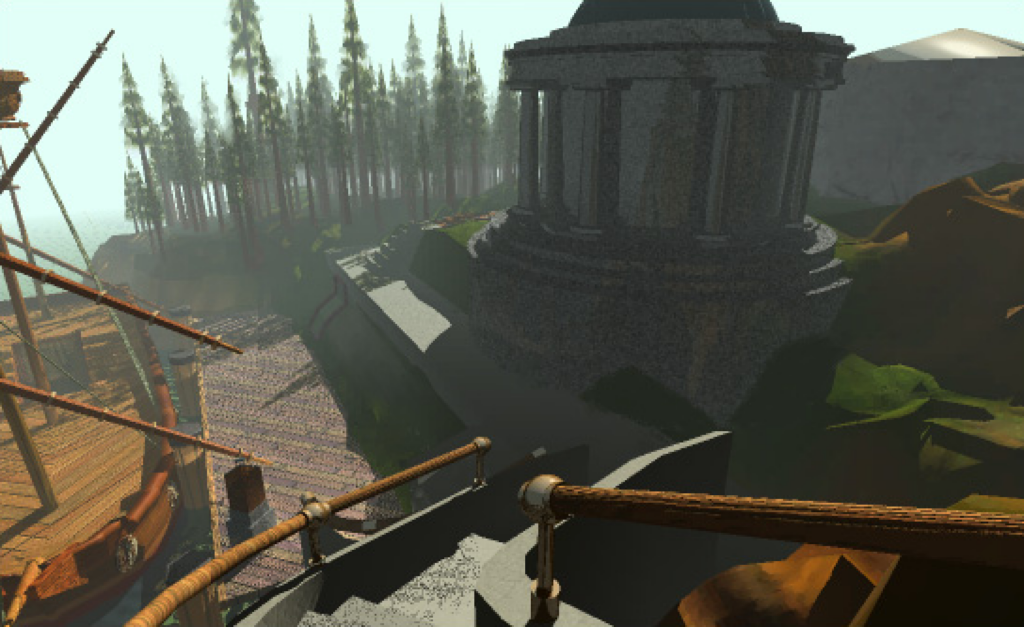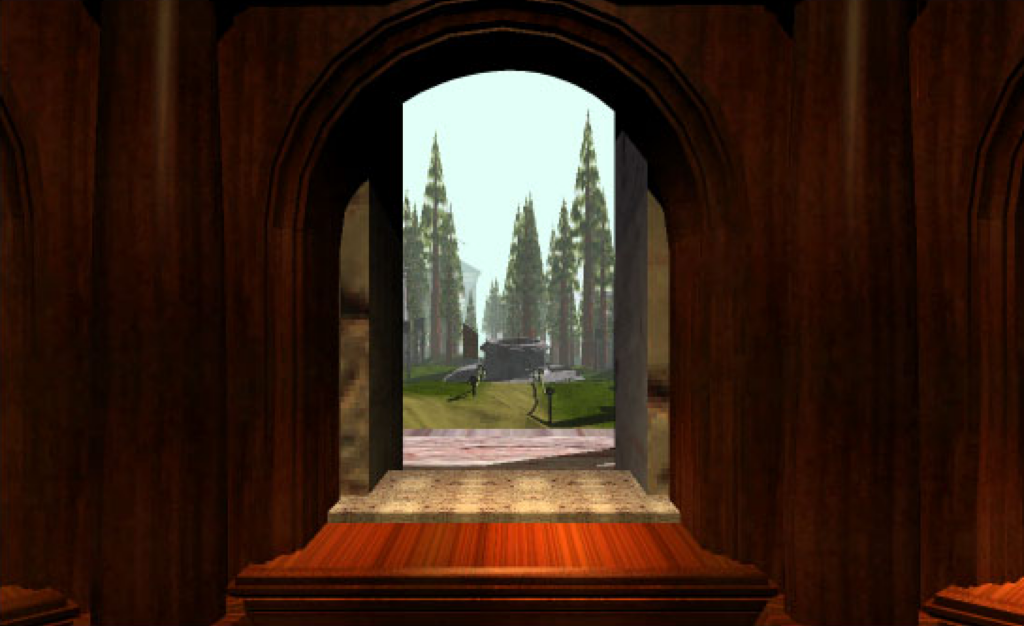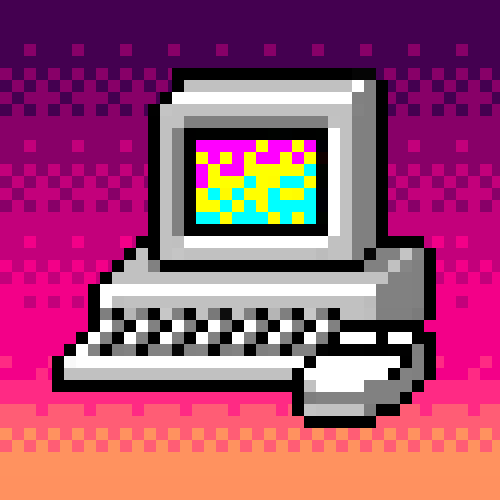In video game history, few titles manage to capture the imagination of players quite like Myst. Released in 1993, this enigmatic puzzle-adventure game was more than just a breakout hit; it was a phenomenon that nudged the boundaries of what a video game could be. Its debut was departure from the fast-paced, action-packed titles of its era, inviting players instead into a quiet, intricately designed world filled with mystery and nuanced storytelling.
While it’s easy to glance back through rose-tinted glasses at the pixelated past, the significance of Myst in the gaming landscape cannot be understated. Myst had profound influence on both retro and modern gaming. Join us as we go through its Ages and uncover the ripples this iconic title has sent through decades of game design and storytelling.

Gaming in 1993
1993 was a watershed year for the video gaming industry, characterized by technological leaps, iconic releases, and evolving player expectations.
The Hardware Landscape
The era was dominated by console wars and the rise of home computing. The Super Nintendo Entertainment System (SNES) and Sega Genesis were locked in fierce competition, with both platforms vying for market supremacy. Meanwhile, the personal computer was staking its claim as a legitimate gaming device, fueled by the increasing power of PCs and the launch of Windows 3.1 a couple of years prior.
Gaming Trends
This was a time of diverse gaming experiences. Platformers like Sonic the Hedgehog and Super Mario Bros. had established strong footholds, while fighting games like Street Fighter II and Mortal Kombat were drawing crowds in arcades and homes alike. Role-playing games, led by titles like Secret of Mana and Final Fantasy, were crafting intricate worlds and narratives, setting the stage for expansive, story-driven adventures.
Emerging Technologies
CD-ROM technology was just beginning to influence the gaming world, offering unprecedented storage capabilities compared to traditional cartridges. This allowed for richer visuals, more expansive soundtracks, and the integration of video segments into games.
The Gamer’s Palette
By 1993, players had tasted a wide variety of genres, and expectations were high. Gamers were no longer content with just high scores; they sought immersive experiences, compelling narratives, and intricate gameplay mechanics.
Development
Myst was the creation of two visionary brothers, Rand and Robyn Miller. Their journey began in a humble home office, where their shared passion for storytelling and interactive gaming took flight.
Together, they founded Cyan, Inc., the small software company that would become the birthplace of Myst. With a rough vision, they ventured into uncharted gaming territory.
Rand Miller described the initial idea, saying, “We wanted to add friction that would slow you down but we didn’t think that there were rules to video games necessarily, so we’ll pull out the dying and see if we could do it without that.”
According to Rand, the development of Myst was largely experimental. He stated, “It was just another experiment along the scale of how to make things a little more sophisticated, and even within the game itself, you can see how we were expanding and building more cohesiveness into the worlds as we went.”
Reception
At a glance, Myst stood out – not because of action-packed sequences or flashy graphics, but due to its calm, methodical pace, and its reliance on player curiosity. Its debut on the Macintosh and subsequent transition to the PC showcased the capabilities of CD-ROM technology, blending stunning visuals with captivating audio to create a wholly immersive world. Where most games of the era beckoned players with adrenaline and competition, Myst drew them in with intrigue and mystery, offering an experience that was as much about introspection as it was about external exploration.
This divergence from the norm, rather than being a limitation, became Myst‘s strength. Its success would go on to signal to developers and publishers alike that gamers were hungry for more than just action. They craved experiences, stories, and worlds that challenged both their reflexes and their intellects.

What set Myst apart
Myst’s appeal lay not in its challenges to one’s reflexes, but rather to one’s mind and sense of wonder.
Non-linear Storytelling and Exploration-based Gameplay
Unlike many games of its era that guided players down a set path, Myst dropped players onto a seemingly deserted island with little context. The narrative unfolded not through explicit directives, but through environmental cues, journals, and intricate puzzles. This open-ended approach allowed players to explore at their own pace, fostering a genuine sense of discovery. Some people hated it. Others loved it.
Photo-realistic Graphics and Pre-rendered 3D
Leveraging the capabilities of CD-ROM, Myst offered visuals that were nothing short of groundbreaking at the time. The pre-rendered scenes, which blended seamlessly with the in-game environment, provided an unparalleled level of detail and immersion. Each locale, from the mechanical gears of the Stoneship Age to the ethereal beauty of Channelwood, was meticulously crafted to convey a deep sense of history and mystery.

Immersive Audio and Ambiance
Sound played an integral role in the Myst experience. Whether it was the distant cry of a bird, the rustling of leaves, or the haunting melodies that underscored your journey, the audio was designed to transport players directly into the game world. Sound clues were often integral to solving puzzles, further emphasizing the game’s commitment to a holistic sensory experience.
Emphasis on Intellectual Puzzles
Combat and action were notably absent in Myst. Instead, players were confronted with a series of thought-provoking puzzles that required observation, deduction, and patience. Each puzzle was intricately woven into the world’s lore, ensuring that every solution felt like a meaningful step forward in the overarching narrative.
“Once the player finds the solution, if they blame us, then we haven’t done a good job. But if they blame themselves, then we have.”
Rand Miller, co-creator of Myst
Subtle Narrative
At its core, Myst was a tale of brothers, betrayal, and the consequences of unchecked ambition. The story, relayed through journals and the occasional video clip, asked players to make moral decisions that would determine the game’s ending. This mature approach to storytelling was a departure from many contemporary games and added depth to the player’s journey.
Myst was a testament to the power of restraint and intentionality in game design. By opting for a quieter, more contemplative experience, the developers at Cyan Worlds showcased the breadth of emotions and experiences video games could offer. In doing so, they not only crafted a memorable adventure but also expanded the horizons of what seemed possible within the medium.

Myst’s influence on retro gaming
Before Myst, first-person puzzle adventures were somewhat rare. Its success paved the way for what would become a subgenre in its own right. Games like Riven (the direct sequel to Myst), The 7th Guest, and others took cues from Myst, emphasizing environmental storytelling, cerebral challenges, and atmospheric immersion.
Games started placing more emphasis on environmental storytelling, where the setting itself conveyed history, lore, and narrative depth. This move towards “show, don’t tell” design could be seen in titles across various genres and into modern RPGs.
With its meticulously crafted visuals and soundscapes, Myst raised expectations for game production values. Developers began investing more in creating polished, immersive experiences, pushing the boundaries of the hardware they were working on.
Myst appealed to a demographic too, one that wasn’t typically associated with gaming. It drew in older players, non-gamers, and those looking for a more contemplative experience, thereby broadening the gaming community.
In the wake of Myst‘s success, the late ’90s saw a surge in adventure games that borrowed from its formula. While not all achieved the same level of success or critical acclaim, it was clear that Myst had left an indelible mark on the industry.

Influence on Modern Gaming
While Myst‘s immediate impact on the retro gaming scene was profound, its ripples can still be felt in modern games.
Narrative Depth and Environmental Storytelling
Today’s gamers often expect intricate stories and deep lore in their gaming experiences. Myst‘s approach to storytelling—relying heavily on environmental cues, journals, and player deduction—has become a standard in many modern titles. Games like Dark Souls, The Witness, and Firewatch exemplify this approach, inviting players to piece together the narrative from the environment itself.

The Rise of Indie Exploration Games
Myst‘s emphasis on exploration, ambiance, and cerebral challenges paved the way for the “walking simulator” subgenre, popularized by indie developers. Titles like Gone Home, Dear Esther, and What Remains of Edith Finch echo Myst‘s commitment to exploration-driven storytelling, where the journey and discovery are paramount.
Puzzle Integration
Modern games, even those outside the adventure genre, have incorporated puzzles that feel organically embedded within the game world, much like the seamless challenges of Myst. Whether it’s manipulating time in Braid or controlling shadows in Limbo, the legacy of Myst‘s thoughtful, world-integrated puzzles is evident.
Virtual Reality and Immersion
As technology has advanced, the quest for immersion has led to the rise of virtual reality (VR) gaming. VR titles, with their focus on deep immersion and exploration, share a spiritual kinship with Myst. In fact, Myst itself has been reimagined for VR, bringing its iconic world to life in an entirely new dimension.
Embracing a Diverse Gaming Audience
Just as Myst attracted a broad demographic in the ’90s, the gaming industry today recognizes the diverse tastes of its audience. From action-packed shooters to contemplative indie titles, the modern gaming landscape celebrates a variety of experiences, reflecting the broadened horizons that Myst helped pioneer.
Focus on Atmosphere
Modern titles place a heavy emphasis on crafting a distinct atmosphere, be it through visuals, sound, or gameplay mechanics. This atmospheric focus, championed by Myst, can be seen in the haunting worlds of games like INSIDE, the serene landscapes of Journey, or the eerie isolation of Subnautica.
In essence, while gaming has evolved in countless ways since 1993, the principles and innovations introduced by Myst continue to reverberate. Its influence serves as a reminder that beyond flashy graphics and complex mechanics, the heart of a game lies in its ability to captivate, challenge, and immerse its players in a world ripe for discovery.

The Continued Allure of Myst
There’s an intrinsic quality to Myst that keeps it eternally relevant and continually enticing.
One of the standout features of Myst was its beautiful, photo-realistic visuals. Even today, the game’s design, from the iconic library to the intricate machinery scattered throughout the island, is a masterclass in aesthetic cohesion and attention to detail. The pre-rendered scenes, while technically surpassed by modern capabilities, maintain an artistic charm that’s universally appealing.
In a world with quick gratifications and fast-paced gaming, Myst remains a place for thoughtful contemplation. The game doesn’t hand solutions to players; it demands attention, patience, and deduction. For those seeking a cerebral challenge, Myst is as satisfying today as it was at its release.
The immersive world of Myst offers escapism. Its atmospheric soundscapes, combined with its isolated and mysterious setting, allow players to lose themselves in exploration and wonder. Plus, sometimes retro gamers want to re-experience a game they’ve played many times before to feel a hit of nostalgia.
We’ve also seen a dedicated fan sites spring up around Myst, like Myst Journey, discussing theories, sharing experiences, and even creating fan art and fiction. New players entering the world of Myst today find not only a game but also a vibrant community eager to share in their journey of discovery.
For many, Myst serves as a benchmark against which other adventure games are measured. Its balanced blend of storytelling, puzzle design, and atmospheric immersion sets a high standard that many modern titles aspire to reach.

How to Play Myst Today
As time moves forward, technology invariably evolves, often leaving behind beloved relics of the past. Yet, classics like Myst refuse to be left in gaming history. If you’re looking to step onto the enigmatic island or introduce someone new to its wonders, here’s how you can experience Myst in today’s digital age.
Original Versions and Emulators
For purists who want the authentic 1993 experience, the original version of Myst can sometimes be found on vintage software sites or old CD-ROMs. If you have an old copy lying around, tools and emulators like DOSBox or ScummVM can help you run the game on modern systems.
Digital Platforms
Over the years, Myst and its remastered iterations have found their way onto digital distribution platforms. Sites like GOG (Good Old Games) and Steam have optimized versions of Myst for modern OSes. Look out for frequent sales.
From Click to Tap
Given the game’s point-and-click nature, Myst translates beautifully to touchscreen devices. Both iOS and Android platforms have had versions of Myst released, making it convenient for on-the-go exploration.
Virtual Reality
For a truly immersive experience, Myst has been reimagined for virtual reality platforms like Meta Quest. With this VR adaptation, you’re not just clicking through the world of Myst; you’re living inside it, interacting with its environments in a visceral and groundbreaking manner.
Community Resources
Should you encounter any hiccups or just want some spoiler-free hints, the robust Myst community is a treasure trove. You’ll find walkthroughs and a fan subreddit with players eager to assist or share their experiences.
In my latest playthrough of Myst on my phone, I realized that some ages couldn’t be solved until I first solved other ages. That’s because tones and tunes carry over and need to be reused. Especially in the Mazerunner portion of the game. I ended up just using a walkthrough to get through that section.
Wrapping up
Looking back over the past three decades, it’s evident that Myst‘s release was a defining event that shifted perceptions and altered the trajectory of the industry. It broke the mold of conventional gaming, blending intricate storytelling, awe-inspiring aesthetics, and deep immersion in a way that was both revolutionary for its time and remains influential today.
For many, Myst was an introduction to a new kind of gaming—one that valued atmosphere and narrative depth as much as gameplay mechanics. Its success proved there was a vast audience eager for such experiences, paving the way for countless titles that followed in its footsteps.
In the end, the legacy of Myst is not just about its stunning visuals, intricate puzzles, or captivating lore. It’s about the game’s ability to transport players to another place, to challenge their perceptions, and to leave a mark on their memories.
Want more Myst? Check out Cyan’s Making of Myst:







